Royal Marine snipers aboard a Wildcat helicopter fired a precision disabling shot to stop a high-speed drugs boat in the Gulf of Oman, as HMS Lancaster seized more than £35 million worth of illegal narcotics, according to the Ministry of Defence.
The operation saw the Type 23 frigate’s Wildcat from 815 Naval Air Squadron intercept three fast-moving skiffs during a dawn patrol. As the vessels attempted to evade capture at speeds above 40 knots, the Royal Marines’ Maritime Sniper Team from 42 Commando took aim, striking one boat’s outboard engine with a single round.
More than one and a half tonnes of heroin, crystal methamphetamine and hashish were recovered from the scene, the Ministry of Defence stated. The seizure represents one of the Royal Navy’s most significant counter-narcotics operations in the Middle East in recent years.
Armed Forces Minister Al Carns praised the mission’s precision and professionalism, describing it as “a well-planned operation culminating in a surgical shot by a Royal Marines sniper disabling the engine of a vessel travelling at 40 knots.” He added that the interception “demonstrated effectiveness, decisive action and the exceptionally high standard of our Royal Navy and Marines.”
The operation also marked the first time in the Gulf region that snipers have used non-lethal disabling fire against a moving target. Typically, drug traffickers in the area use slower wooden dhows rather than the high-speed skiffs seen in this case.
Commander Sam Stephens, Commanding Officer of HMS Lancaster, said the interception showcased how the ship’s crewed and uncrewed systems could work together effectively. “This operation saw Lancaster’s crewed and uncrewed aircraft working hand-in-glove under the direction of the ship’s operations room,” he said. “The outcome was a highly successful bust, removing large quantities of narcotics from the streets and preventing their profits from fuelling extremism.”
Lieutenant Guy Warry, who piloted the Wildcat during the engagement, said in the announcement, that conducting live disabling fire while maintaining a stable hover over fast-moving targets was “a career highlight.” He added that the mission was “a true testament to the high levels of training that both the flight, MST and ship have achieved prior to the bust.”


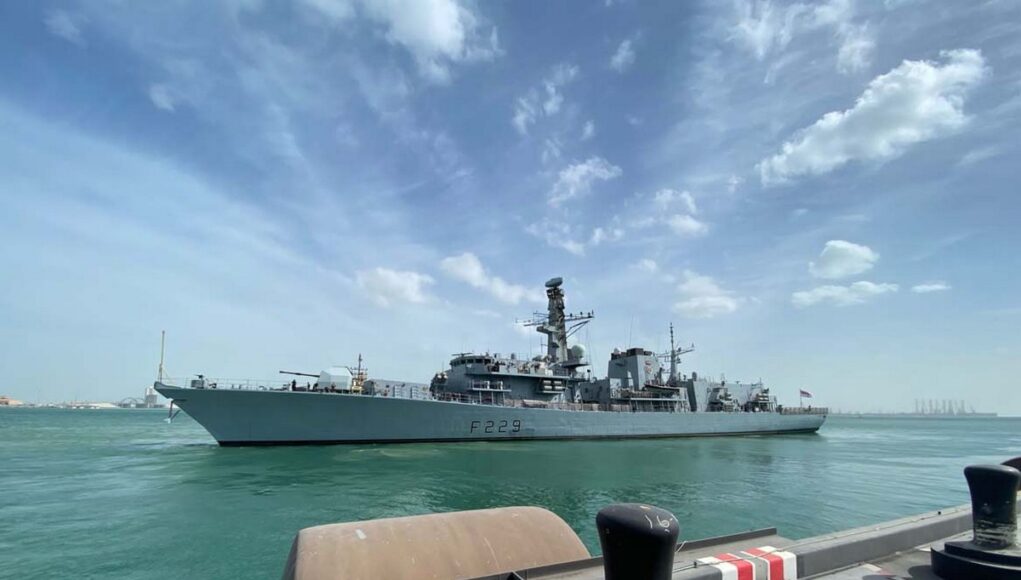

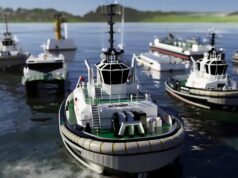


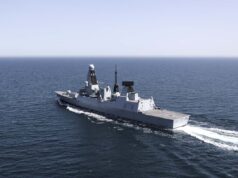

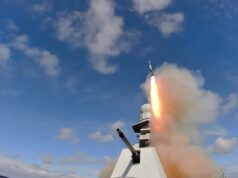
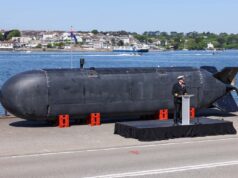
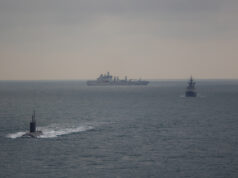
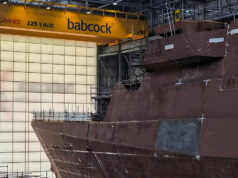

“Preventing their profits from fuelling extremism”
Well maybe that’s one use but not the only one.
“Narcotics” (I remember all those american shows) or Drugs are huge business.
type 23 still proving their value despite being old and tired. the remaining ships in the class will be a vital part of the fleet until the final one is gone
The article speaks of three (3) boats but only references one (1) being taken out of action by a sniper round to an engine. Did the other two (2) boats stand down on their own, and all three (3) were captured?
From the official UK press release:
“Ultimately, it led to two of the skiffs being abandoned – but not the third which persisted in trying to get away.”
Thanks for the clarification. 🙂
The article speaks of three (3) boats, but only references one (1) being taken out of action by a sniper round to an engine. Did the other two (2) boats stand down on their own, and all three (3) were captured?
Once again shows how big a loss Lancaster will be when she shortly leaves UK MCC Bahrain for the last time without direct replacement.
A round of applause for the designers of the Type 23 class. Designed in the early 1980’s for a short (17 year) but hard worked career (with NO mid-life refit) as specialist ASW escorts in the North Atlantic, with an EH-101 helo embarked as an mini MPA. 40 year later they are performing tasks that they were never intended for, and were superbly reliable workhorses until wear and tear, corrosion, and sheer old age caught up with them as they reached their late 20’s (i.e. long after their originally intended design life.)
Sadly if the treasury had not been cheap the fleet would still be intact and working.. you can build a ship to last 25-30 years without problem.
That is not why the T23 have a short life span, it was to encourage continuous shipbuilding
It absolutely was why, they were built to as tight a budget as they possibly could.. the funding actually started for a very light TASS tug with a small ship flight and no defensive weapons.. the Falklands meant they had to add guns, seawolf and finally stick anti ship missiles on it… they were trying to claw back every single penny they could from the design and more years of life is not actually cheap on ships..it most definitely was not about a focus on preserving shipbuilding because the Type 45 did not make the same reduced life choices and there was no immediate follow up frigate plan.. it was treasury bull shite pure and simple.
Anyone who shots will know that is quite frankly an amazing shot to make, not only was the platform moving but the target as well.. both in unpredictable dynamic environments ( air and sea), that is one serious talent.
what the hell is NON-Lethal out of a rifle that will disable an engine?
Well they did not say a less than lethal or none leathal round..they said Non lethal fire… a round is only lethal if it hits you.
Non-lethal, as in targeting the outboard engines and not the human crew.
There’s an image in Navy Lookout showing the Team walking towards the T23’s hangar from the Wildcat. The leading person is carrying an Accuracy International AX50. This is a 50 Cal anti-materiel rifle. But what is interesting to me is that the sniper is using a red dot reflex sight, not something like the traditional Schmidt & Bender scope as used on the L115. Red Dot sights traditional do not have magnification, as they are used for quick target acquisition. Meaning the Wildcat would have had to get reasonably close to the skiffs, for the sniper to be able to accurately target the outboard engines.
Beast of a gun, with the talent to use it!
I have Red Dots and Magnifiers too, you can flip the magnifier out of the way.
OK, not a gun like “His” but It works pretty well.
Yes assume it would need to be a close shot.. not sure if the picture is just stock.. but 50 to 100 yards from a moving helicopter targeting an outboard on a fast moving speeded boat.. is essentially insane.. the physics and intuition involved in a shot like that.. just hitting a simple fast moving target at 50 yards is juicy shooting… let alone something like a fast boat bouncing around.. and from a helicopter.. it’s bonkers level of skill.
I thought Lancaster was due to leave the Arabian Gulf in late September for a leisurely ‘show the flag’ return cruise to the UK via the Horn of Africa? Looks like someone senior decided instead to keep her in the Arabian Gulf for as long as possible, although the crew will be disappointed at missing some good runs ashore.
The Royal Marine who fired the shot deserves recognition. Ditto Lt Warry for his top notch airmanship.
Non-lethal means nobody died.